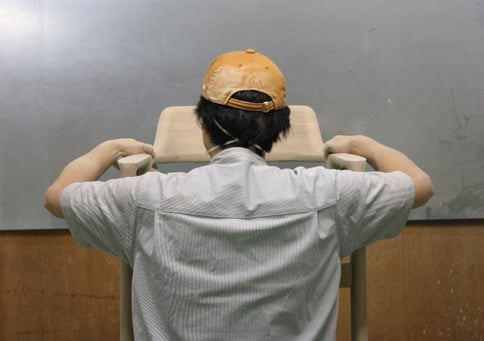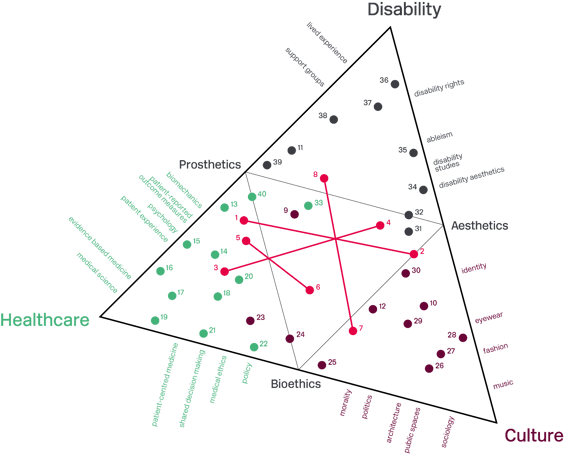- 7 December 2020
- 3 min read
- 3 March 2020
- 4 min read
Many people express their identity through their choice of clothing, shoes, and accessories such as eyeglasses. But what might the design of something as intimate as a prosthetic hand say about the identity of its wearer — whether intentionally or not?
The field of disability studies grapples with such profound questions. And THIS Institute fellow Graham Pullin finds huge satisfaction in addressing them by working across the fields of disability, design and healthcare improvement.
Our blog article featuring Graham’s “Hands of X” research project, shared a different experience to the typical limb-fitting process for wearers. That work led to a substantive exhibition at the V&A Dundee design museum.
In his THIS Institute fellowship, Graham is building on his extensive earlier work to help understand how limb-fitting and other processes can better reflect the nuanced relationship people with limb difference have with their disability. He incorporates insights from the clinical and technical disciplines that feed into healthcare improvement research – including prosthetics, psychology, and occupational therapy – as well as design.
Graham is also exploring influences from disciplines seemingly far outside healthcare improvement. He visited Japan, a leading nation in the field of assistive technology, to attend an international prosthetics conference. And while he was there, he visited an internationally renowned architect's office and witnessed highly skilled craftsmen at work in a furniture factory. The visits provided inspiration, opening windows into other worlds, and providing influences that Graham brings to his prosthetics design and his fellowship study.

Naoto Fukasawa’s Hiroshima Armchair being finished by hand in the Maruni
Wood Industry’s furniture factory. (Photo: Graham Pullin, courtesty of Maruni.)
To help him explore new interdisciplinary connections that could influence healthcare, Graham has created a triangular landscape with different disciplines and sub-disciplines plotted on each axis. He maps research activities on to the landscape according to their focus, and adds connecting lines to highlight intriguing possibilities for new interdisciplinary conversations. This diagram illustrates the diversity of Graham’s sources of inspiration. And the new connections he builds as part of his fellowship work will help to draw wider influences into his research.

Triangular landscape created by Graham Pullin. Numbered dots are individual researchers, coloured according to their background (healthcare, disability, and culture). Connecting lines indicate new interdisciplinary conversations mediated during the study.
Illustrating the interdisciplinary point further, Graham wrote an article published by the international architecture and design magazine Domus. The article is part of a theme for 2020 where Domus explores how design and architecture can play a role in broader societal questions. It examines the contribution that art school-trained designers could make to prosthetics and thereby to healthcare improvement.
“The field of disability studies was founded in rejection of a medicalised approach in which disability is framed as a 'problem'” says Graham. "Healthcare improvement research, as a highly interdisciplinary field that welcomes new influences, has so much to gain from perspectives arising from disability studies. People working in disability studies already make a contribution to bioethics. And they interrogate and influence attitudes, including the cultural meanings of objects associated with disability. This contribution is the premise behind the Domus article.”
The article profiles the Bebionic hand from Ottobock. But the discussion is far from a conventional review of a prosthetic hand. Rather, it reflects on the dilemma that many people with limb difference experience between prostheses that attempt to replicate a human hand and those that are overtly “bionic”. Such a polarised choice leaves many people feeling unrepresented, if their perspective is that disability is simply a part of their life. Graham’s practice embodies a middle ground, developing prosthetic designs that are clearly artificial – yet nonetheless understated.
To find out more about Graham’s work, watch the recording of his talk from our annual event THIS Space. To find out more about the intersection of healthcare improvement studies, design and disability studies, you can read Graham’s article here, which is reproduced in full with permission from Domus magazine.